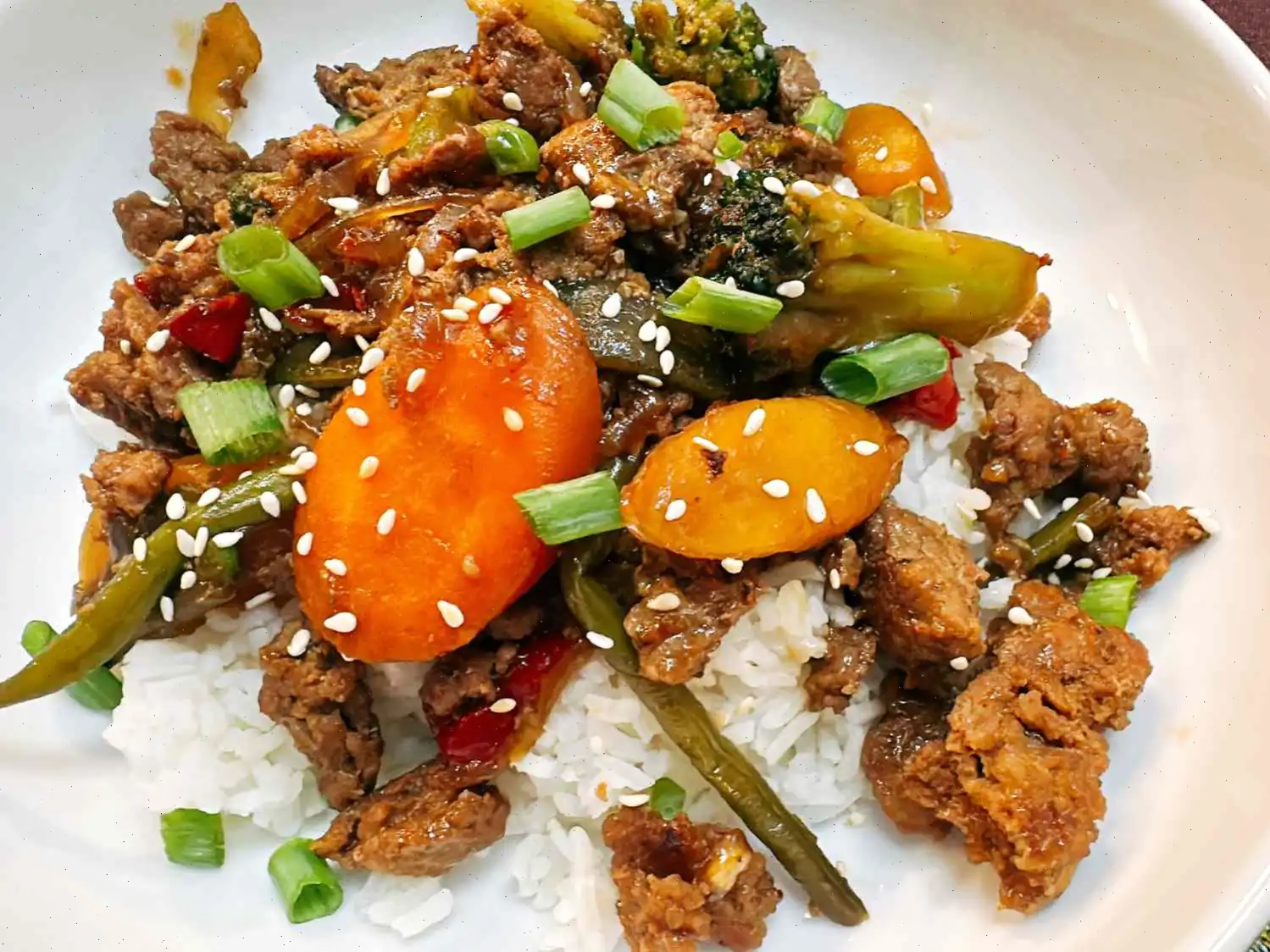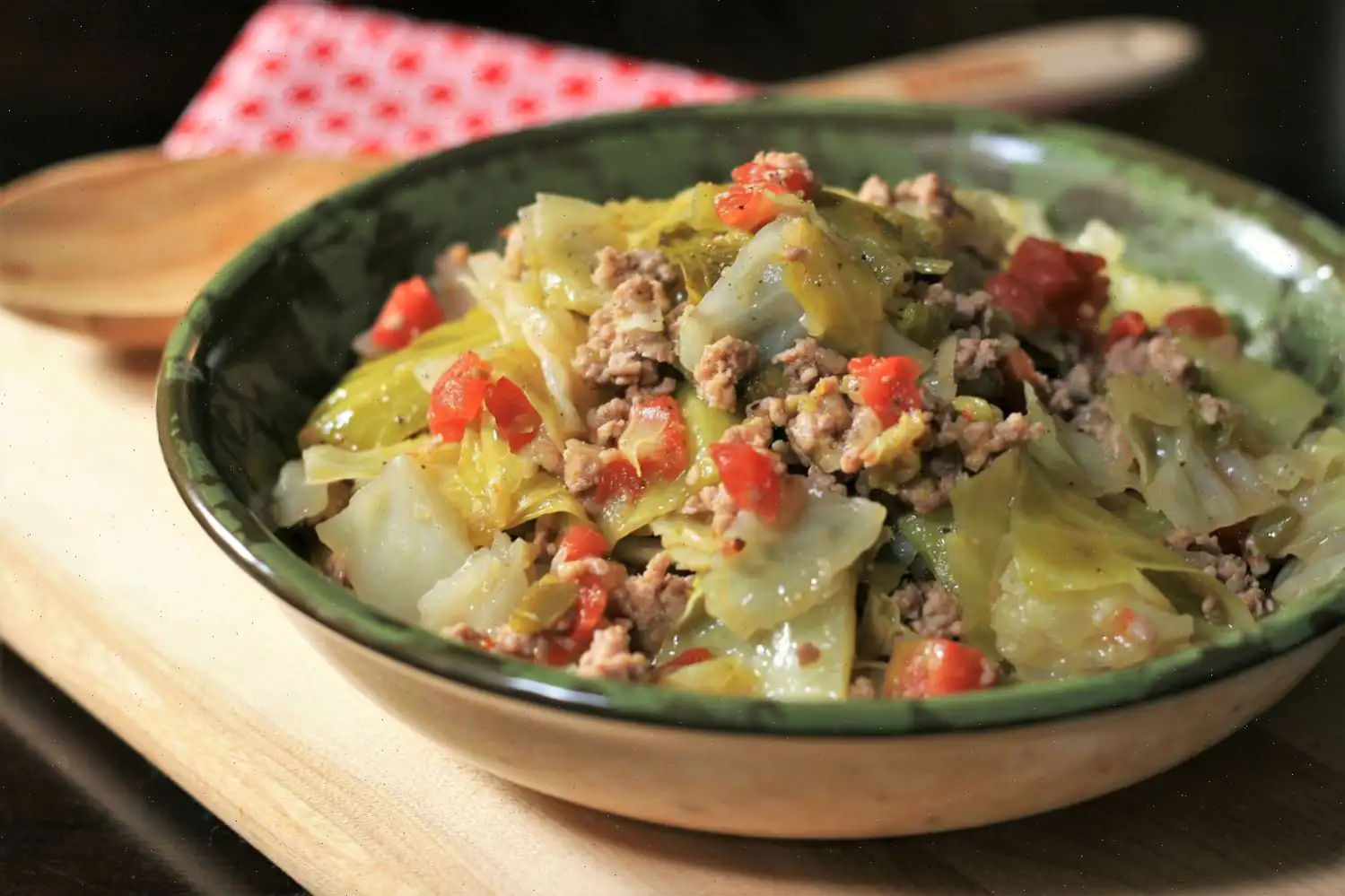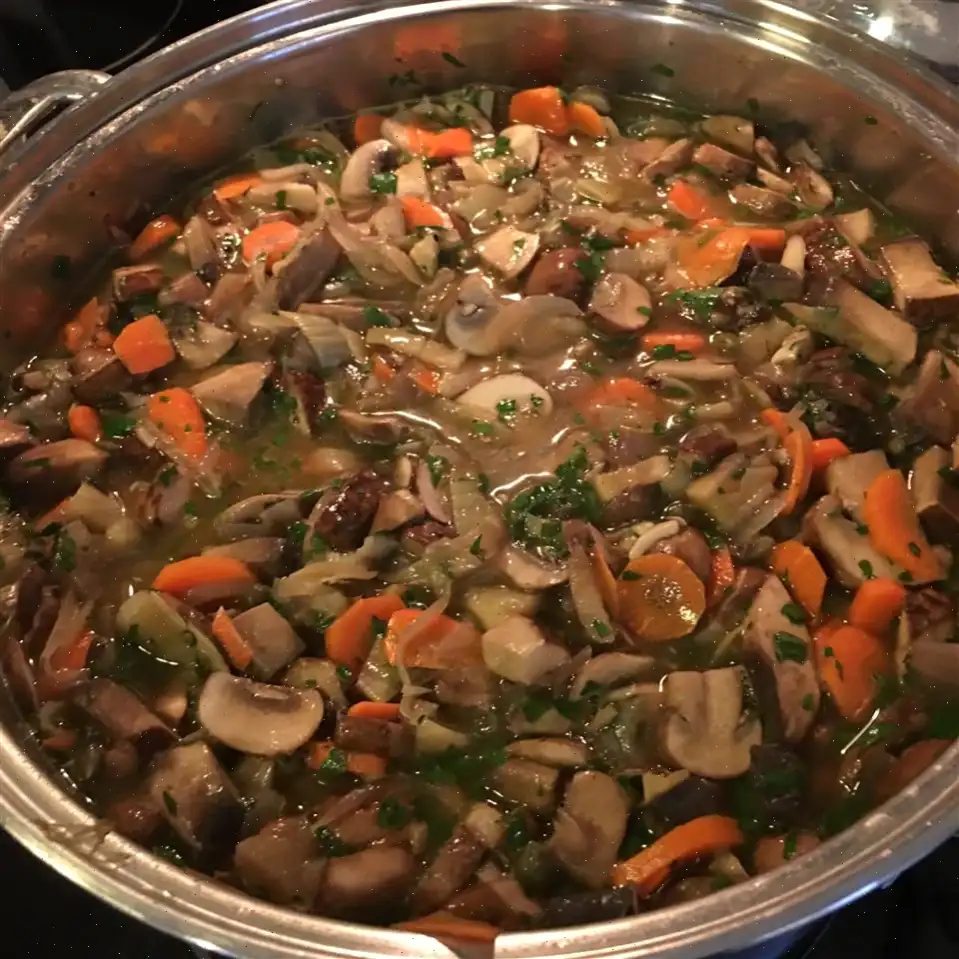
Ground Turkey Teriyaki Stir-Fry Recipe
This recipe was originally developed for five servings. Ingredient amounts are automatically adjusted when scaled, but cooking times and methods remain unchanged. Keep in mind that not all recipes scale perfectly.
Ingredients
- 1/3 cup soy sauce
- 1/4 cup mirin
- 1/4 cup sake
- 3 cloves garlic, minced
- 1 teaspoon fresh ginger, grated
- 2 tablespoons brown sugar
- 1 teaspoon cornstarch
- 2 teaspoons oil
- 1 pound ground turkey
- 1 small onion, diced
- 2 cups frozen stir-fry vegetables, or more to taste
- 2 1/2 cups cooked jasmine rice
- 1 teaspoon toasted sesame seeds, or to taste
- 1/4 cup green onions, sliced
Directions
- In a small bowl, whisk together soy sauce, mirin, sake, garlic, ginger, brown sugar, and cornstarch. Set aside.
- Heat a skillet over medium-high heat and add the oil. Place the ground turkey in the pan and let it brown for 3 to 5 minutes before breaking it up with a spatula.
- Add the diced onion and stir-fry vegetables. Cover and cook for 3 minutes.
- Uncover the skillet, pour in the prepared teriyaki sauce, and cook while stirring until the sauce thickens, about 3 minutes.
- Spoon the turkey and vegetables over warm jasmine rice. Garnish with sesame seeds and sliced green onions before serving.
Cooks Note
This dish works beautifully with udon noodles as well. Simply stir cooked udon into the sauce in Step 4 and heat through for about 1 minute. Fresh vegetables can easily be used in place of frozen for a brighter flavor and texture.
From the Editor
If you are new to cooking jasmine rice, here is everything you need to know to prepare it perfectly every time.
Nutrition Facts (per serving)
- Calories: 445
- Total Fat: 23g (29%)
- Saturated Fat: 5g (25%)
- Cholesterol: 96mg (32%)
- Sodium: 1372mg (60%)
- Total Carbohydrate: 29g (11%)
- Dietary Fiber: 3g (10%)
- Total Sugars: 12g
- Protein: 28g (56%)
- Vitamin C: 64mg (71%)
- Calcium: 106mg (8%)
- Iron: 3mg (19%)
- Potassium: 631mg (13%)
* Percent Daily Values are based on a 2,000 calorie diet. Your daily values may vary depending on your calorie needs. Nutritional information is approximate and may not be available for every ingredient. If you follow a restricted diet, please consult a healthcare professional before preparing this recipe.
History and Origins of Teriyaki Stir-Fry
The roots of teriyaki trace back to Japan, where "teri" refers to the glossy sheen of the sauce, and "yaki" means to grill or broil. Originally, teriyaki was a technique used for grilling fish with a glaze made from soy sauce, mirin, and sake. Over time, the method spread to include various meats, and as stir-frying became popular globally, chefs adapted the sauce for quick, high-heat cooking with proteins like chicken, beef, and more recently, ground turkey. This adaptation keeps the essence of Japanese flavors while accommodating modern, fast-paced lifestyles.
Regional Variations
Different regions in Japan and beyond have developed unique takes on teriyaki stir-fry. In Tokyo, the sauce tends to be sweeter with a higher mirin content, giving it a thick, caramelized finish. Kansai-style teriyaki often balances soy sauce and sugar, producing a lighter, saltier glaze. Internationally, especially in the United States, vegetables like bell peppers, broccoli, and snap peas are commonly added, and ground turkey serves as a leaner alternative to traditional meats. These regional and cultural adaptations demonstrate the versatility of the dish while keeping the characteristic sweet-savory flavor intact.
Differences from Similar Dishes
While teriyaki stir-fry shares similarities with other Asian stir-fries such as soy-garlic beef or sweet-and-sour chicken, it is distinguished by its signature glossy sauce and balanced sweetness. Unlike general stir-fry sauces that rely on cornstarch thickeners or heavy spices, teriyaki focuses on a harmony of soy, mirin, and sake, complemented by ginger and garlic. The simplicity and sheen of the sauce set it apart, making it instantly recognizable and uniquely Japanese in origin.
Typical Serving Context
Teriyaki stir-fry is a versatile dish commonly served at home, in casual eateries, and in Japanese restaurants worldwide. It pairs well with steamed rice, udon noodles, or even quinoa for a modern twist. Many bento boxes include a portion of teriyaki meat alongside pickled vegetables, highlighting its role as both a main course and a complementary side. In home kitchens, the ground turkey version provides a quick weeknight dinner option that is flavorful yet light, appealing to families seeking balanced meals.
Interesting Facts
- The original teriyaki technique was primarily for fish; chicken and other meats were incorporated much later as the dish spread internationally.
- Mirin, a sweet rice wine, not only adds flavor but also gives the sauce its signature glossy appearance, which is key to authentic teriyaki.
- Ground turkey is a modern adaptation to make the dish leaner and faster to cook while maintaining traditional flavors.
- Teriyaki sauces are often commercially bottled, but homemade versions, like the one in this recipe, allow precise control over sweetness and sodium.
- Despite its Japanese origins, teriyaki stir-fry has become a global comfort food, especially in Western countries, due to its simplicity and adaptability.
FAQ about Ground Turkey Teriyaki Stir-Fry Recipe
Comments
FrackFamily5 CACT
10/06/2025 01:52:54 PM
This was a tasty treat. Made quite a bit and was perfect with a dollop of sriracha on top! Fast and delicious.
William Williams
04/11/2025 03:46:55 AM
Bro, I officially feel like a master chef.
Joyce Moore
03/18/2025 08:55:18 PM
It was gone before I could take a picture 😂
Mary Graham
01/29/2025 12:58:36 AM
Made this tonight for dinner and it was delicious! So much flavor!
Nicholas Hall
09/29/2024 04:09:26 PM
Quick, simple, and unbelievably good.








